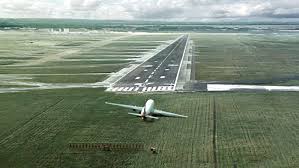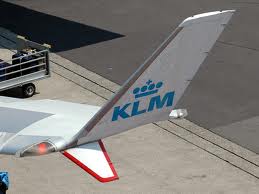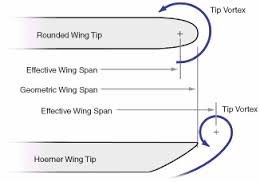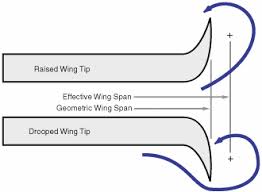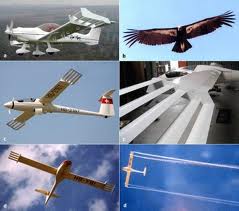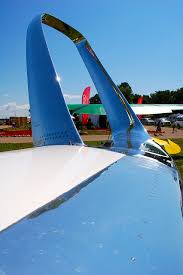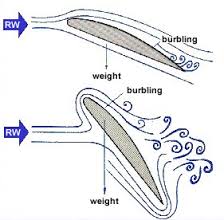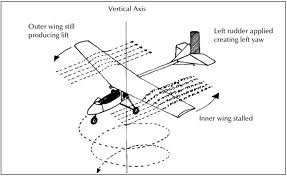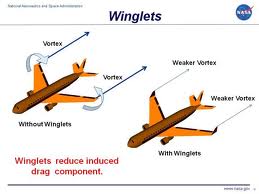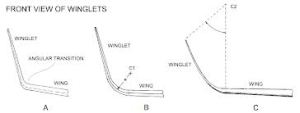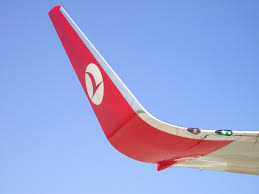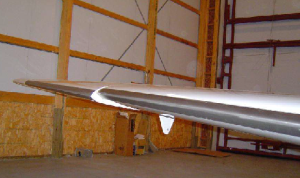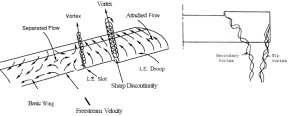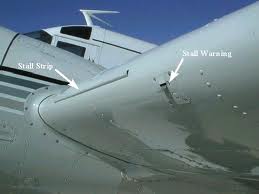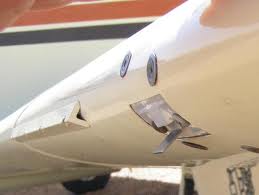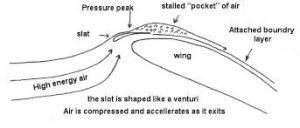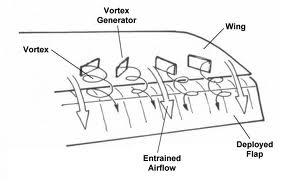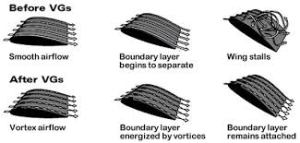WING IN GROUND EFFECT

The conventional practical use of lifting bodies, are wings on aircraft. In very broad terms, aircraft fly because the movement of the wing through the air produces a greater static pressure on the lower surface of the wing than on the upper surface of the wing. The pressure differential equates to a resultant force upward which supports the weight of the aircraft.
Aircraft normally fly in a freestream, that is the air around the wing is not bounded in any way.
WIG(wing in ground effect) craft make use of a phenomenon known as ‘ground effect’. Ground effect is the common name for the phenomenon where a boundary is placed below (and near) the lower surface of the wing. This results in an effective increase in the static pressure below the wing and increases the lift to drag ratio. In practice, the boundary is the earth’s surface, whether it is terrain or water.
- When an aircraft is flying at an altitude that is approximately at or below the same distance as the aircraft’s wingspan or helicopter’s rotor diameter, there is, depending on airfoil and aircraft design, an often noticeable ground effect. This is caused primarily by the ground interrupting the wing tip vortices and downwash behind the wing. When a wing is flown very close to the ground, wingtip vortices are unable to form effectively due to the obstruction of the ground. The result is lower induced drag, which increases the speed and lift of the aircraft.
- A wing generates lift, in part, due to the difference in air pressure gradients between the upper and lower wing surfaces. During normal flight, the upper wing surface experiences reduced static air pressure and the lower surface comparatively higher static air pressure. These air pressure differences also accelerate the mass of air downwards. Flying close to a surface increases air pressure on the lower wing surface, known as the “ram” or “cushion” effect, and thereby improves the aircraft lift-to-drag ratio. As the wing gets lower, the ground effect becomes more pronounced. While in the ground effect, the wing will require a lower angle of attack to produce the same amount of lift. If the angle of attack and velocity remain constant, an increase in the lift coefficient will result, which accounts for the “floating” effect. Ground effect will also alter thrust versus velocity, in that reducing induced drag will require less thrust to maintain the same velocity.
- Low winged aircraft are more affected by ground effect than high wing aircraft. Due to the change in up-wash, down-wash, and wingtip vortices there may be errors in the airspeed system while in ground effect due to changes in the local pressure at the static source.
- Another important issue regarding ground effect is that the makeup of the surface directly affects the intensity; this is to say that a concrete or other smooth hard surface will produce more effect than water or broken ground.
- When a wing approaches the ground two phenomena are actually involved in the increase of the lift force and reduction of the drag. The ground effect is a common name for both effects, which is sometimes confusing. These two phenomena are sometimes referred to as span dominated and chord dominated ground effect. The former results mainly in the reduction of the induced drag (D) and the latter in the increase of the lift (L). The designations span dominated and chord dominated are related to the the fact that the main parameter in the span dominated ground effect (reduces drag) is the height-to-span ratio ,whereas in the chord dominated ground effect (increases lift)it is the height-to-chord ratio.
- an empirical formula has been derived for practical and preliminary calculations of the chord-dominate ground effect. It has the following form
- CLground = CL(h/c)-0.11
where CLground represents the wing lift coefficient in the ground effect mode,
CL – lift coefficient in open air, h indicates height of the wing and c is the chord length.
GROUND EFFECT
. Figure depicts a wing in ground effect.

The boundary creates an alteration of the flow field that is caused by the boundary not allowing the flow under the wing to expand as it would in free air. In terms of the total pressure of the flow, the additional lift is due to a rise in static pressure under the wing.
The total pressure of the flow field can be divided between the static pressure (surface pressure) and dynamic pressure (the pressure associated with velocity). As the total pressure remains constant throughout the flow field, the sum of the static and dynamic pressure must also remain constant.
As the flow is forced into the region between the wing and the boundary, the decrease in dynamic pressure is transformed into a rise in the static pressure. This rise in the Static pressure is often referred to as ‘ram pressure’. The resulting altered pressure distribution causes a net increase in the lift and a change to many of the other aerodynamic characteristics of the wing.
GROUND EFFECT’s Effect on lift ,drag, downwash
the boundary near the wing alters the flow field about the wing. The effect is
demonstrated in Figure


The change in flow field has the effect of reducing the downwash angle and therefore increasing the effective angle of incidence at a given geometric angle of attack. This causes a corresponding rotation of the resultant force vector and changes to the component of lift an drag forces. The effect is to increase the lift component and reduce the induced drag component, thus increasing the lift to drag ratio.
The increased lift to drag ratio provides a net gain in efficiency and the reduction in drag provides the benefit of a reduced thrust requirement in cruise flight.
EFEECT ON PITCHING MOMENT
In addition to creating lift and drag, the movement of a wing through the air creates a moment about the aerodynamic centre of the wing. This moment is known as the pitching moment and is the result of the pressure distribution on the wings surface. In a moving craft this pitching moment needs to be balanced in order to keep the craft stable. WE typically add another lifting surface to overcome pitching moment, either at the rear of the aircraft (tailplane) or at the front of the aircraft (canard).
Ground effect alters the pitching moment generated by a wing. The altered flow about the wing moves the aerodynamic centre of the wing and therefore the pitching moment generated by the wing. The effect is the result of the pressure distribution changes over the lower surface of the wing. The ram pressure in extreme ground effect causes a near uniform pressure distribution over the under surface of the wing, while not significantly altering the upper surface pressure distribution (see Figure ).

Wings generally create a nose down pitching moment in cruise flight. Ground effect causes an increase in this moment, resulting in a greater stabilizing force being required to balance the pitching moment. To remain stable, a craft in ground effect will generally require a larger tailplane or canard.
This larger surface creates greater drag and therefore reduces the efficiency of the craft as a whole. It also creates structural and weight penalties that reduce the efficiency of the craft.
An additional complication of pitching moment in ground effect is that the pitching moment changes with height above the boundary. In freestream flight, the aerodynamic centre is generally considered to be approximately one quarter of the chord back from the leading edge.
Flight in extreme ground effect may move the aerodynamic centre to the half chord position. This movement of the aerodynamic centre with the height of the wing above the boundary may cause considerable configuration design difficulties. In addition, the need to be able to control the craft over a large pitching moment range increases the drag, structural and weight penalties discussed earlier.
Considerable research has been Considerable research has been conducted into overcoming the variation of pitching moment with height. Many designers have claimed to overcome the effect by the use of unique wing sections and/or craft configurations. Different shaped wing sections should be able to limit this effect by altering the pressure distribution over the lower surface so the change from IGE(in ground effect) to OGE(out of ground effect) is not large. Such a section is the S-shaped section used on the Amphistar. However, these sections may be dramatically inefficient in OGE flight or incapable of operating OGE and this is a likely area for further research. Planform shapes differing from conventional aircraft may provide another method to reduce the change in pitching moment.
Effect of Height above the Ground

From the modelling viewpoint, three separate models have emerged, each modelling a certain zone above the boundary.
The first zone is the region in which the wing is operating between the boundary and a height of 20% of the chord of the wing. This region has a high level of constriction of the flow in the vertical direction and the flow becomes two dimensional with the vertical degree of freedom of the flow is restrained.
The second zone is the region between the height of one chord length of the wing to ten span lengths. In this region, the model is dominated by the span of the wing. Inviscid flow models are used in this region and show a marginal increase in the L/D to that of OGE flight.
For awing flying in the region between 20% of the chord and one chord height, a combination of the two models are required. Above ten span lengths, free flight models currently used in aerodynamic theory for aircraft design, are used.
for wings operating in ground effect the addition of end plates is more efficient because they increase the lift to drag ratio more than if they where used to increase the wing’s span. It is also noted the end plates are more effective on wings of low aspect ratios, which are more likely to be found on WIG aircraft.
Theoretical Benefits of Ground Effect

The theoretical efficiencies of airborne craft can be expressed in terms of their ability to carry a given payload over a given distance. This efficiency is directly related to the craft’s lift to drag ratio. WIG craft’s higher lift to drag ratio, provide them with the potential for greater efficiencies than aircraft.
The resulting increase in the lift to drag ratio of a WIG craft results in an increase in the craft efficiency. One measure of efficiency is to consider the distance a specific payload can be transported.
Airborne craft are governed by the Bréguet range equation, for which the representation for propeller driven craft is shown below:
Range= (ηp*L/ Cp*D)*ln(wi /wi+wf)
• ηp propeller efficiency
• Cp specific fuel consumption
• L/D lift to drag ratio
• Wi initial weight
• Wf fuel weight
- The drag of the craft and the most efficient speed for the operation of the propulsion system dictate the best cruise speed.
- While the maximum level speed is determined by the drag of the craft and the maximum thrust generated by the propulsion system.
- A reduction in the drag of the craft will see a corresponding increase in the craft’s maximum speed and optimal cruise speed.
Height Stability
- WIG craft height stability can be explained by considering the effect on lift with changes in height. The stable case is achieved when a decrease in height results in an increase in lift and vice versa.
- Under these conditions the increased lift has the effect of restoring the craft to the original height. Thus, if the craft is disturbed in height the lift force will act to restore the craft to the original height.
- In the opposite case, the craft will be unstable in height if the lift force acts to amplify the change in height. In this case a decrease in height will result in a decrease in lift. The decrease in lift will result in the aircraft accelerating further towards the ground, a result enforced by the variation of lift with height.
- In WIG craft, the lift coefficient is a function of both height and incidence. For WIG craft the response is defined by the position of the centre of gravity. Dependent on the position of the centre of gravity, a change in speed may result in a change in incidence or a change in height. Pure speed changes resulting in height changes; occur at one extreme of the centre of gravity envelope.
- At the other, speed changes will result in pure changes of incidence. Between these extremes, speed changes will result in a combination of both height and incidence.
- For low angles of attack: There is no “ground effect” lift bonus at low angles of attack, as and lift (as well as induced drag) is less per unit airspeed for low angles of attack.





